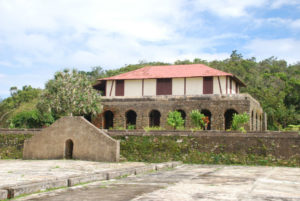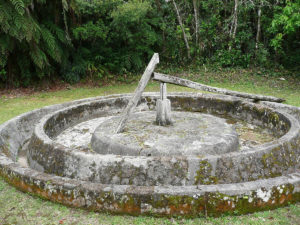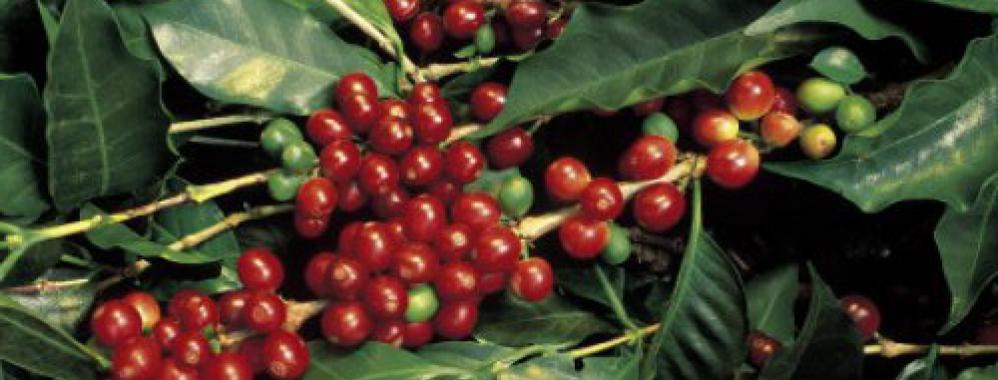For centuries, Cuba has been a land of coffee. There is no page of history without that aroma. And if the appetizing and delightful smell mixes with forbidden loves, any legend is captivating narration.
The brothers of Haiti gave us very significant essences in the construction of our nationality. Next to them came the French settlers driven away by the rebellion and the impetus of the Revolution in that Caribbean country.
This is how Mr. Víctor Constantan came to eastern Cuba: he came to put his life and his economy safe. As soon as he settled on fertile land he began to grow corn, cocoa and coffee.
For ten years he was building a mansion in the mountains of the current province of Santiago de Cuba, based on lime, stone and mud. Their finances were expanding, thanks to the kind and productive land where they worked around 25 slaves. Among them was the beautiful mulatto Isabel María, who served as inspiration to name that farm: La Isabelica.
As they say, that was the most prosperous coffee plantation of the 19th century in the eastern part of the country, and to this day dryers and mills have been preserved that worked in that period of splendor. The building has two stone floors: on the ground floor you can see different objects of the time such as a sundial, the furniture of yesteryear and various artifacts used in coffee production, including a mill used to pulp dry coffee; while, on the upper level, the atmosphere of the original dwelling is recreated: living-dining room; living room, library and bedroom.
Precisely, the legend tells of several stories about the love that lived Mr. Victor and Maria Isabel. It was a relationship silenced by the racist prejudices of the time: although both were legitimately married, the mulatto died without obtaining her freedom. As they say still in the corridors of that house can be felt the hurried steps of her, who assumed the domestic chores during the day and at night satiated the passionate desires of don Víctor. Such was the delivery of both that since then the popular voices assure that in the matrimonial bed never slept any white woman.
According to specialists, worldwide, Cuba has the largest number of old coffee plantations with archaeological value. Specifically La Isabelica is considered a World Heritage Site, for its historical, architectural and environmental values.
CAFETAL “LA ISABELICA” ORIENTAL CUBANO. HISTORIA DE UN AMOR PROHIBIDO.
Desde hace siglos Cuba ha sido tierra de café. No hay página de la historia sin ese aroma. Y si el apetitoso y deleitable olor se mezcla con amores prohibidos, cualquier leyenda resulta narración cautivadora.
Los hermanos de Haití nos legaron esencias muy significativas en la construcción de nuestra nacionalidad. Junto a ellos vinieron los colonos franceses ahuyentados por la rebeldía y los ímpetus de la Revolución en ese país caribeño.
Así llegó al oriente de Cuba el señor Víctor Constantan: venía para poner su vida y su economía a salvo. En cuanto se acomodó en tierra fértil comenzó a cultivar maíz, cacao y café.
Durante diez años estuvo construyendo una mansión en las montañas de la actual provincia Santiago de Cuba, a base de cal, piedra y barro. Sus finanzas iban en expansión, gracias a los terrenos bondadosos y productivos donde trabajaban alrededor de 25 esclavos. Entre ellos se contaba la bella mulata Isabel María, quien sirvió de inspiración para nombrar aquella finca: La Isabelica.
Según cuentan, aquel fue el cafetal más próspero del siglo XIX en el oriente del país y hasta hoy se conservan secaderos y molinos que funcionaron en aquella época de esplendor. La edificación cuenta con dos pisos de piedra: en la planta baja pueden apreciarse diferentes objetos de la época como un reloj de sol, el mobiliario de antaño y diversos artefactos utilizados en la producción cafetalera, incluido un molino usado para despulpar el café seco; mientras, en el nivel superior se recrea el ambiente de la vivienda original: sala-comedor; sala de estar, biblioteca y dormitorio.
Precisamente, la leyenda cuenta de varias historias sobre el amor que vivieron el señor Víctor y María Isabel. Fue una relación silenciada por los prejuicios racistas de la época: a pesar de que ambos se casaron legítimamente, la mulata murió sin obtener su libertad. Segun dicen aún en los pasillos de aquella casa pueden sentirse los pasos apresurados de ella, quien asumía las labores domésticas durante el día y por la noche saciaba los deseos pasionales de don Víctor. Tal fue la entrega de ambos que desde entonces las voces populares aseguran que en la cama matrimonial nunca durmió mujer blanca alguna.
De acuerdo con los especialistas, a nivel mundial, Cuba posee la mayor cantidad de antiguas haciendas cafetaleras con valor arqueológico. Específicamente La Isabelica es considerada Patrimonio de la Humanidad, por sus valores histórico, arquitectónico y ambiental.
Agencies/Rad.Enciclopedia/Laura Barrera/Internet Photos/ Arnoldo Varona/ Extractos/ TheCubanHistory.com
THE CUBAN HISTORY, HOLLYWOOD.









